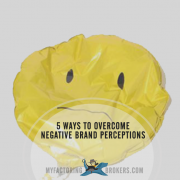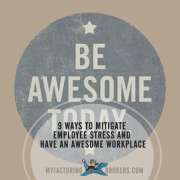Social networks and business news sites were all abuzz this week after the New York Times published an article about what it takes to be an ‘Amazonian.’ Regardless of whether it’s portrayal was entirely accurate, here are five takeaways for fixing a bad employee culture that can help you cultivate a workplace where everyone wants to work.
The New York Times recently published an article about Amazon’s so-called bad employee culture describing it as “bruising,” where 100 hour work weeks are not uncommon, people break down and cry at their desks, and people’s personal problems are viewed as inconvenient distractions.
Not only are both past and present Amazon employees weighing in on both sides, Amazon CEO Jeff Bezos has also issued a response saying that this isn’t the Amazon “where he works” that has been printed publicly and disseminated to employees. From bruising to blissful, as both sides weigh in, here are five things you can learn about cultivating an employee culture anyone would want to work in.
Whatever the ultimate ramifications are for Amazon, the article and its fallout is producing a hail storm of commentary on social networks and media sites. It seems safe to assume that not only will the topic of fixing a bad employee culture be in the forefront at Amazon, but at other companies as well. It may, in fact, open up a Pandora’s Box of employee commentary about what they feel is right or wrong in other workplaces as well.
It seems unlikely that any business owner would knowingly set out to create a bad employee culture like the one described in the New York Times article. We decided to take a closer look at the New York Times article, its allegations, and Jeff Bezos’ response, and found several key takeaways that can help you refine your own human resources and management practices, to ensure that you have the employee culture you actually set out to create.
Bad Employee Culture? 5 Things You Can Learn from the Amazon-New York Times Employee Culture Debate
No two employees experience your employee culture the same way.
While some aspects of the employee culture can be controlled, managed and directed, employees still interpret the culture through the filter of their own experiences, education, upbringing, needs, wants, and so on. Every employee will experience the workplace differently. It is possible that even if you develop a positive culture, it might not meet the needs of an individual, who then becomes dissatisfied and leaves, or even leaves a negative review for your business on employer rating sites like Glassdoor or Monster.com.
You will not be able to make every employee happy, but you stand the best chance of doing so if you hire for employee culture fit as much as (or even more than) skills and experience. You can teach skills but if someone is a bad fit for your employee culture, there is little that can be done.
Take employee complaints as seriously as you take customer complaints.
Once upon a time an unhappy employee had little recourse. Even disgruntled employees did little more than go away and tell a few friends about their bad experience. But today, as referenced above, unhappy employees can produce the same negative consequences for a brand that an unhappy customer can effect.
Be sure that you have a procedure in place and that employees know how to submit complaints (and alternatives should they need to register a complaint privately or bypass their manager or someone else in the organization). Once registered, your plan should also detail how each complaint will be reviewed, how action plans will be implemented, and how communication will occur afterward, taking into account any need for privacy or anonymity.
Ultimately, the buck stops at the top.
In Bezos’ letter to employees he lets them know that not only are they welcome to notify HR of problems in the workplace, but they also have the option of going straight to him. Ultimately, if a business has a negative employee culture, accountability goes all the way to the top.
A poor culture was either developed under active direction, or allowed to permeate the business because of passivity or ignorance. Either way, accountability – and the responsibility to make things right – ultimately resides with the owner or CEO.
Growth can erode employee culture.
Your company doesn’t have to get as big as Amazon for growth to erode the employee culture. When a business is small, it is easy to see when problems might be cropping up that could negatively impact the employee culture and make adjustments. But the bigger an organization gets and the busier the work environment, the harder it is to keep a watchful eye out for problems – or problem people – that can adversely affect the employee culture for everyone else.
Just as hiring decisions need to be made with employee culture in mind, appointing good managers and leaders and ensuring they understand and want to uphold the values that underlie your employee culture can help to safeguard it as you grow.
Employees are more than your most important assets.
Many small business owners claim that their employees are their most valuable assets, but viewing employees as mere assets is doing them a dangerous disservice. Assets are things you deploy, things that add value to the bottom line, things that can be leveraged like tools to accomplish business goals. No one wants to be a tool!
Perhaps the key to creating an enviable employee culture resides in changing the vocabulary. Instead of thinking of employees as your most valuable assets, you should consider them your most important customers, instead.
Employees are the customers whose buy in matters most. They have the most ability to influence customer acquisition, customer retention, and customer loyalty. They know the inner workings of your company, and see more of what goes on ‘behind the curtain’ than anyone else. Changing the way that you view their relationship with the organization and their importance may lead to the organizational culture that you set out to create to begin with!
***
We offer business finance tools suitable for use in growing a staffing business or temporary employment services firm, including staffing agency factoring services that speed up cash flow by unlocking the money represented in unpaid customer invoices.










Trackbacks & Pingbacks
[…] published articles about company culture before, including tips for improving company culture so that your organization can improve its […]
Leave a Reply
Want to join the discussion?Feel free to contribute!